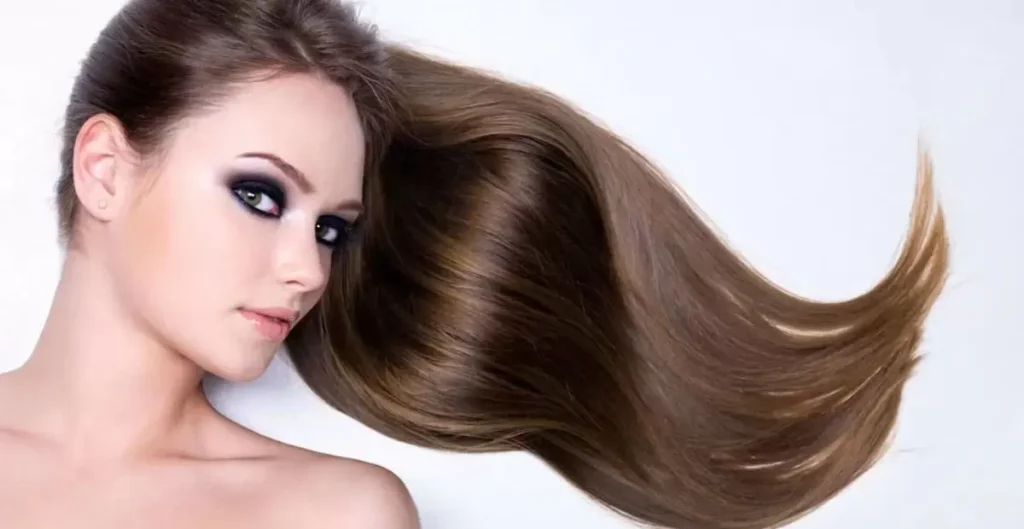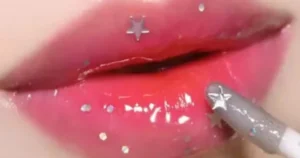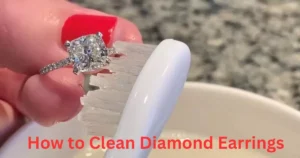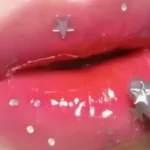Minoxidil, commonly known by the brand name Rogaine, is a topical medication used to treat androgenetic alopecia or pattern hair loss in men and women. While it can be an effective hair regrowth solution for many, some users may wish to stop using minoxidil at some point. This blog post outlines what minoxidil is, how it works, its benefits, and importantly, provides tips on how to safely stop its use without causing further hair loss.
The Basics of Minoxidil
| Effect | Details |
| Hair shedding | Increased hair shedding and fall occurs as a “shedding phase” after stopping minoxidil use. This allows the scalp to readjust without minoxidil’s stimulating effects. |
| Timing of shedding | Shedding typically peaks within 2-3 months after the last application. It then usually subsides within 6-9 months as hair cycles regulate. |
| Variation between individuals | The duration of post-minoxidil shedding can vary significantly between users, ranging from 3-12 months in rare cases. |
| Underlying cause | Without minoxidil, the hair regrowth induced during treatment falls out as follicles resume their natural genetic growth patterns and cycles. |
| Reversing effects | All hair regrowth achieved through minoxidil application may be undone once treatment discontinues and follicles are no longer stimulated. |
| Stabilizing hair loss | With proactive scalp care and alternative treatments during adjustment, permanent worsening of the pre-minoxidil hair loss state can often be prevented after withdrawal. |
What is Minoxidil?
Minoxidil is a vasodilator, meaning it opens up (dilates) blood vessels. It was originally developed and FDA-approved as a pill to treat high blood pressure, but it was later discovered that one of its side effects was unexpected hair growth in many male users. This led to it being formulated into a topical solution and being approved in the 1980s to treat androgenetic alopecia.
How does Minoxidil work?

The exact mechanism is not fully understood, but minoxidil is believed to stimulate hair follicles during the growth (anagen) phase. By increasing blood flow to the scalp, it provides nourishment to dormant or thinning hair follicles. This allows them to re-enter the hair growth cycle, resulting in new hair growth over time.
What are the benefits of Minoxidil?
When used as directed over several months, minoxidil has been shown to be effective for regrowing hair and maintaining existing hair in many users with androgenetic alopecia. A 2016 review found it produced at least moderate hair regrowth in 48% of men and 33% of women. Results are generally more robust for men versus women.
The Effects of Stopping Minoxidil Use
- Increased hair shedding and fall occurs as hair follicles readjust without minoxidil’s stimulating effects
- Shedding typically peaks within 2-3 months after the last minoxidil application
- Most individuals will see shedding stabilize by 6 months after cessation
- For some, adjustment period may last up to a year depending on duration of minoxidil use
- All hair regrowth achieved through minoxidil may fall out once treatment is discontinued
- Temporary worsening of pre-minoxidil hair loss state can often be prevented with scalp care
- Alternative remedies during transition may minimize permanent density effects
- Dermatologists recommend natural remedies and scalp health practices to support adjustment
- Individual metabolization rates impact how long it takes follicles to regain normal cycling
- Goal is stabilizing hair without significant loss during readjustment phase off minoxidil
Why do people stop using Minoxidil?
Some common reasons individuals choose to stop minoxidil include:
- Dissatisfaction with results after long-term use
- Cost and inconvenience of maintenance therapy
- Experience of side effects like skin irritation or itchiness
- Preference for alternative treatments like laser therapy
What happens when you stop using Minoxidil?
Once minoxidil use is discontinued, all hair gained during treatment may be lost. This is because minoxidil promotes hair growth through temporary, non-genetic means. When it is no longer applied regularly, the stimulation effect ends.
Many people experience a shedding phase after stopping minoxidil, as the stimulated hairs fall out to make way for natural hair growth cycles to resume normally again. This shedding usually plateaus within 3 months.
How long do Minoxidil withdrawal effects last?
The duration of hair shed after stopping minoxidil can vary significantly between individuals. On average, increased shedding appears to peak within 2-3 months and subside within 6 months. In rare cases withdrawal shedding may last up to 1 year, but most users return to their pre-minoxidil state within 6-9 months after stopping treatment.
Alternatives to Minoxidil
If discontinuing minoxidil, it’s important to explore alternative approaches to prevent further hair loss and encourage ongoing regrowth.
Natural hair growth remedies
- Applying rosemary, peppermint, or lavender essential oils which may stimulate follicles.
- Massaging the scalp daily with a dermaroller to boost circulation.
- Eating a diet rich in proteins, vitamins, and minerals vital for hair health.
Hair transplant surgery
Surgical hair restoration can yield permanent results and may be an option if hair loss has stabilized. This involves grafting hair follicles from the back/sides to the thinning areas.
Hair care products for hair growth
Gentle products containing DHT-blocking ingredients like saw palmetto may help maintain hair while transitioning off minoxidil. Supplements such as liposomal keratin may also aid growth.
Best Hair Care Practices for Healthy Hair

Maintaining optimal scalp and hair health is key both during and after discontinuing minoxidil use.
Scalp care for hair growth
- Massage the scalp daily with a boar bristle brush to stimulate circulation
- Keep the scalp clean and flake-free with a mild shampoo
- Consider prescription foams with DHT-blockers if hair loss is ongoing
Preventing hair breakage and thinning
- Handle hair gently and avoid excessive heat styling, tight hairstyles
- Use a wide-tooth brush or comb instead of vigorous brushing
- Consider hair supplements to nourish hair from within
Hair styling without damaging hair
- Minimize use of hot tools, let air dry when possible
- Use heat protectant sprays before heating hair
- Trim split ends regularly to maintain hair strength
By implementing healthy hair habits and exploring alternative options, it’s possible to stop minoxidil use gradually without significant ongoing hair shedding. But patience is key, as it usually takes 6-9 months for the hair follicles to adapt fully after withdrawing from minoxidil treatment. Consulting a doctor or hair loss specialist may also help optimize hair regrowth strategies during this transition period.
Minoxidil For Hair Growth
While effective for many, minoxidil is not a permanent solution for pattern hair loss and androgenetic alopecia. Use should always be reviewed long-term with a medical professional. Some key facts on long-term minoxidil use:
- Results are best maintained with consistent, ongoing application as directed
- Stopping use often leads to hair fall as follicles readapt without minoxidil’s effects
- Many users need to use minoxidil indefinitely to keep hair regained during treatment
- Women may gain less regrowth versus men due to differing causes of hair shedding
For How Long Should I Use Minoxidil?
There is no set timeframe, as hair loss progression can vary by individual. Most specialists recommend:
- Using minoxidil for at least 12 months to assess effectiveness
- Considering continuation indefinitely for maintained benefits
- Having follow-up consultations every 6-12 months to review hair health
Proper scalp/hair care along with minoxidil can optimize long-term results, but permanent discontinuation may cause restarting the hair loss process.
Will Stopping Minoxidil Cause My Hair To Fall Out?
For many, abruptly stopping minoxidil after long-term use can potentially trigger a temporary period of increased hair fall. This occures as follicles readjust without minoxidil’s effects stimulating growth. It’s usually not permanent loss:
- Shedding peaks in months 2-3 after stopping
- Most users stabilize within 6-9 months as hair cycles regulate
- Gradual reduction of minoxidil over 3-6 months may lessen shed effects
- Proactively caring for scalp/hair can support regrowth during this transition
Consulting a doctor can help determine an individualized plan for safely discontinuing minoxidil, minimizing hair fall risks through alternative treatments during the adjustment period.
In conclusion, with mindful scalp care practices and natural remedies, combined ideally with medical guidance, it is possible for many individuals to gradually discontinue minoxidil use without resulting in significant permanent hair loss. Patience and non-abrupt reduction are key steps. Alternative treatments should also be explored proactively to fill minoxidil’s void and support healthy hair cycles after withdrawal from treatment. With the right approach, stopping minoxidil does not have to mean a permanent worsening of hair.
Conclusion
stopping minoxidil use after prolonged treatment does typically lead to a temporary increase in hair shedding and fall as follicles readjust without its growth stimulation effects. However, by implementing healthy scalp care practices, exploring alternative natural remedies, and patience during the adjustment period, it is certainly possible in most cases for individuals to transition off minoxidil without resulting in major permanent hair loss.
Consulting a doctor can also help create an individualized plan to support regrowth during this transition phase through tailored treatment. With the right approach focusing on scalp nourishment combined ideally with medical guidance, any shedding phase experienced can generally stabilize within 6-9 months, preventing significant worsening of the pre-minoxidil hair condition over the long run. Proper management of expectations around this temporary shedding process is an important part of stopping minoxidil successfully.











